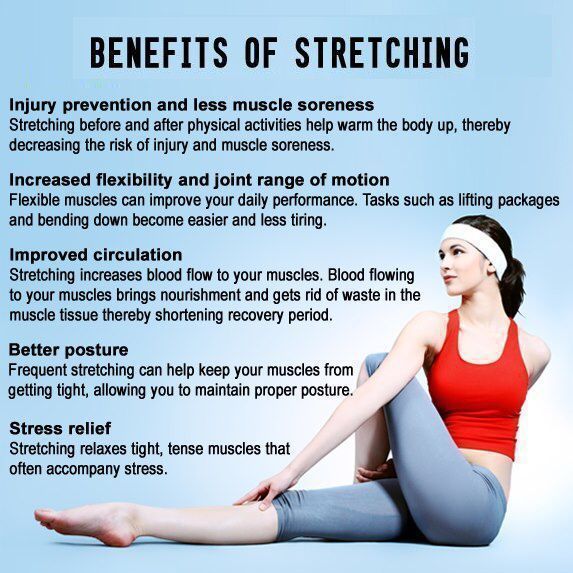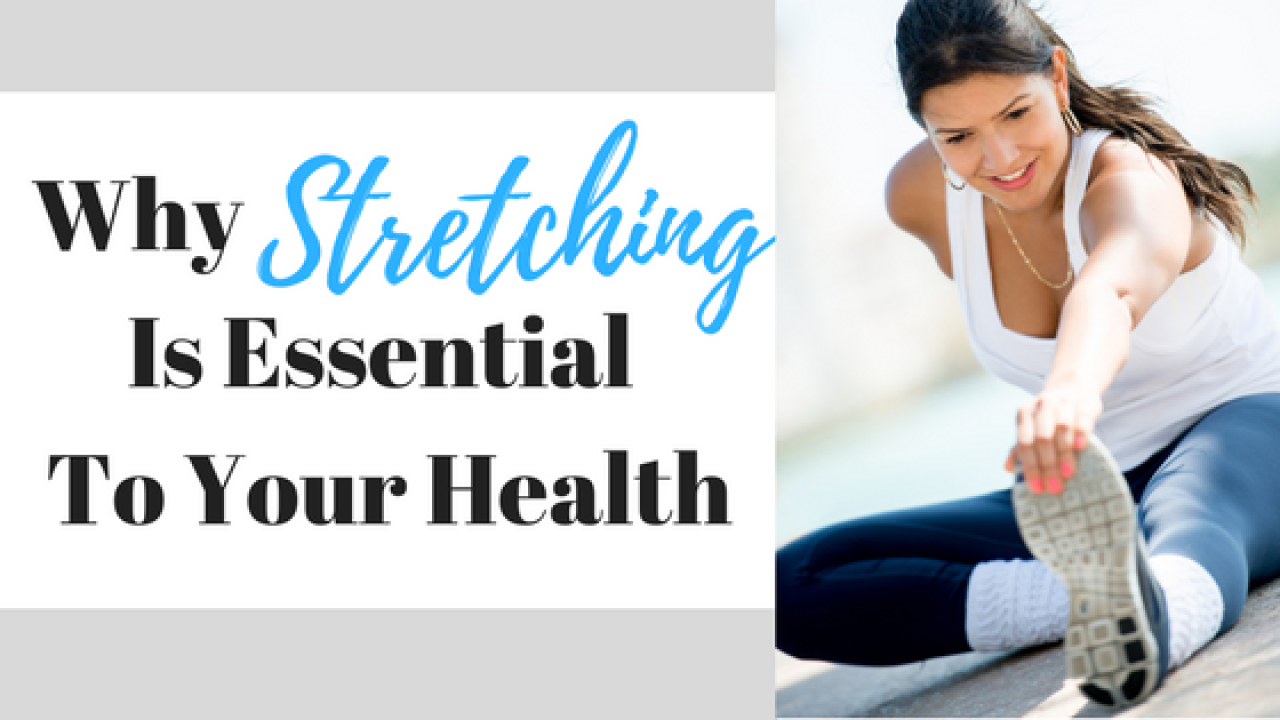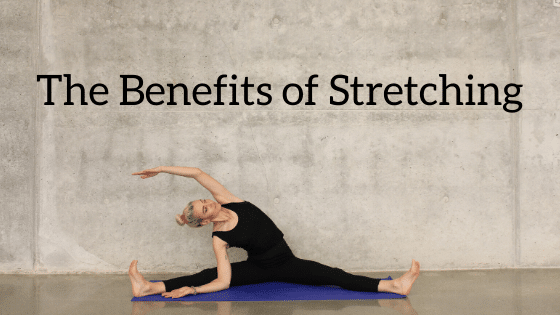The Importance of Stretching and Flexibility in Fitness:
Stretching and flexibility are two of the most important aspects of fitness that are often overlooked or undervalued. Stretching refers to the process of lengthening muscles and increasing their elasticity through various movements, while flexibility is the ability of a joint or muscle to move freely through its full range of motion. Both of these factors are crucial for maintaining good physical health and achieving optimal fitness levels.
Flexibility allows for better movement efficiency and reduces the risk of injury during physical activities. By regularly stretching and practicing flexibility, individuals can increase their range of motion, prevent muscle strains, and improve posture. In this article, we will discuss the importance of stretching and flexibility in fitness, the benefits of incorporating these practices into your workout routine, and some effective ways to get started.

Benefits of stretching and flexibility:
Stretching and flexibility offer a host of benefits that can help individuals achieve their fitness goals and maintain optimal physical health. Some of the most significant benefits of stretching and flexibility include:
- Improved range of motion: Flexibility training can help improve joint mobility and muscle flexibility, which can increase range of motion and improve overall movement efficiency. This, in turn, can help individuals perform everyday activities with ease and reduce the risk of injury.
- Increased blood flow to muscles: Stretching can help improve blood flow to the muscles, which can increase nutrient delivery and remove waste products. This can help speed up muscle recovery after exercise and reduce muscle soreness.
- Decreased risk of injury: Tight muscles can increase the risk of injury during physical activities. By regularly stretching and practicing flexibility, individuals can improve their muscle elasticity and reduce the risk of muscle strains and other injuries.
- Improved posture: Poor posture can lead to a host of physical problems, including back pain and muscle imbalances. Stretching and flexibility training can help improve posture by lengthening tight muscles and strengthening weak ones.
- Enhanced athletic performance: Flexibility training can help athletes perform better by improving their range of motion, reducing the risk of injury, and improving overall movement efficiency. Stretching can also help athletes recover faster from workouts and perform better in competitions.
By incorporating stretching and flexibility training into your fitness routine, you can experience these benefits and achieve better physical health and fitness.

Types of stretching:
There are three main types of stretching that are commonly used in fitness and athletic training:
- Static stretching: This is the most common form of stretching, which involves holding a position for 15-30 seconds to lengthen the muscle. This type of stretching is typically done after a workout when the muscles are warm and relaxed.
- Dynamic stretching: This type of stretching involves moving the body through a range of motion to warm up the muscles and increase blood flow. Dynamic stretching is often used as a warm-up before a workout or athletic activity.
- Proprioceptive neuromuscular facilitation (PNF) stretching: This type of stretching involves contracting and relaxing the muscle while it is being stretched to increase flexibility and range of motion. PNF stretching is typically done with a partner or using a prop, such as a resistance band.
Each type of stretching has its own benefits and can be used for different purposes. Static stretching is best for increasing flexibility and range of motion, while dynamic stretching is ideal for warming up the body before physical activity. PNF stretching is typically used for rehabilitation or to increase flexibility for specific movements or activities.
It’s important to choose the right type of stretching for your goals and needs, and to incorporate stretching and flexibility training into your fitness routine to improve your overall physical health and performance.

When to stretch:
Stretching is an important part of any fitness routine, but it’s important to know when to stretch for maximum benefit. Here are the three main times to stretch:
- Pre-workout stretching: Stretching before a workout can help warm up the muscles and prepare the body for physical activity. Dynamic stretching is typically used as a warm-up before a workout or athletic activity to increase blood flow and improve range of motion.
- Post-workout stretching: Stretching after a workout can help cool down the body and promote muscle recovery. Static stretching is typically used after a workout when the muscles are warm and relaxed to increase flexibility and range of motion.
- Stretching throughout the day: Incorporating stretching and flexibility exercises throughout the day can help improve posture and reduce muscle tension. This can include simple stretches that can be done at a desk or during a break from work or physical activity.
It’s important to listen to your body and not push too hard when stretching. Stretching should be done in a controlled manner and should never be painful. By incorporating stretching and flexibility training into your fitness routine at the appropriate times, you can improve your overall physical health and performance.
Tips for effective stretching:
Stretching is an important part of any fitness routine, but it’s important to stretch effectively to avoid injury and achieve maximum benefits. Here are some tips for effective stretching:
- Start with a warm-up: Before stretching, it’s important to warm up the muscles with light activity, such as walking or jogging. This can help increase blood flow and prepare the muscles for stretching.
- Hold each stretch for 15-30 seconds: When stretching, hold each position for 15-30 seconds to allow the muscle to lengthen and improve flexibility. Be sure to stretch both sides of the body equally.
- Breathe deeply and relax into the stretch: Take deep breaths and try to relax into the stretch. This can help reduce muscle tension and improve the effectiveness of the stretch.
- Don’t push past the point of discomfort: While it’s important to stretch to the point of mild discomfort, it’s important not to push too hard or stretch to the point of pain. This can cause injury and reduce the effectiveness of the stretch.
- Gradually increase the intensity of your stretches: Over time, gradually increase the intensity of your stretches to improve flexibility and range of motion. This can help prevent injury and improve athletic performance.
By following these tips for effective stretching, you can improve your flexibility, reduce the risk of injury, and achieve maximum benefits from your fitness routine.
Flexibility training:
In addition to stretching, flexibility training can be a great way to improve range of motion, reduce muscle tension, and improve overall physical health. Here are some things to consider when incorporating flexibility training into your fitness routine:
Benefits of incorporating flexibility training into your fitness routine:
- Improved range of motion: Flexibility training can help improve range of motion in the joints, allowing for better performance in physical activities.
- Reduced muscle tension: Flexibility training can help reduce muscle tension and improve posture, which can help prevent injury and reduce pain.
- Improved athletic performance: Flexibility training can help improve athletic performance by increasing flexibility and range of motion.
Different types of flexibility training:
- Yoga: Yoga is a popular form of flexibility training that involves holding poses to improve flexibility, balance, and strength.
- Pilates: Pilates is another form of flexibility training that focuses on core strength, balance, and flexibility through controlled movements.
- Tai chi: Tai chi is a gentle form of exercise that involves slow, fluid movements to improve balance, flexibility, and relaxation.
How to get started with flexibility training:
- Start with beginner classes: If you’re new to flexibility training, start with beginner classes to learn proper technique and avoid injury.
- Incorporate flexibility training into your routine: Aim to incorporate flexibility training into your fitness routine at least 2-3 times per week.
- Listen to your body: It’s important to listen to your body and not push too hard when doing flexibility exercises. Start slowly and gradually increase the intensity over time.
By incorporating flexibility training into your fitness routine, you can improve your range of motion, reduce muscle tension, and improve overall physical health.
Conclusion:
In conclusion, stretching and flexibility are crucial components of a well-rounded fitness routine. Incorporating stretching and flexibility exercises into your fitness routine can provide a wide range of benefits, including improved range of motion, increased blood flow to the muscles, decreased risk of injury, improved posture, and enhanced athletic performance.
Remember to warm up before stretching, hold each stretch for 15-30 seconds, breathe deeply and relax into the stretch, avoid pushing past the point of discomfort, and gradually increase the intensity of your stretches over time. Additionally, consider incorporating different types of flexibility training, such as yoga, Pilates, or tai chi, into your fitness routine.
By making stretching and flexibility a regular part of your fitness routine, you can improve your overall physical health and reduce the risk of injury. So next time you hit the gym or head out for a run, be sure to take the time to stretch and incorporate flexibility training into your routine. Your body will thank you for it!
Read More: The Benefits of Incorporating Plyometric Exercises
